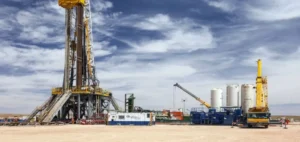Nigeria, which is already home to the six-train Nigeria LNG plant with a capacity of 22.5 million tonnes per year, is also making progress in developing offshore LNG production, as part of the monetization of its vast gas resources.
Nigeria on the road to offshore LNG expansion: New agreements to monetize gas resources
In addition to expanding the NLNG plant to 30 million tonnes per year with the construction of a seventh train, work is underway to deploy a floating LNG infrastructure in the West African country. State-owned NNPC this month signed a new memorandum of understanding with LNG specialist Golar LNG for the potential deployment of a floating LNG export facility in Nigeria, having also agreed to participate in UTM Offshore’s FLNG project at the end of July.
In 2021, Nigeria launched its gas development roadmap, known as the “Decade of Gas”, and pledged further efforts to advance its gas sector to help support economic development. The government is focusing not only on fully exploiting the country’s proven gas deposits, estimated at 203 billion cubic feet, but also on unlocking unproven gas resources of up to 600 billion cubic feet. Offshore LNG production is still a relatively new technology, as demonstrated by the Prelude facility in Australia, the FLNG plant in Cameroon and the Coral Sul project in Mozambique.
In its latest earnings statement dated August 10, Golar LNG reported that “significant” progress had been made on the potential deployment of Golar’s FLNG vessels in various Nigerian gas fields since the signing of a memorandum of understanding with NNPC in April.
“Under a new Memorandum of Understanding signed with NNPC on August 1, Golar and NNPC have agreed an integrated contractual framework for the joint development of specific gas fields for potential FLNG projects,” the company said.
The fields concerned could make full use of the FLNG vessel, the Hilli, at the end of its current contract, in mid-2026. The Hilli is currently deployed for the LNG export project in neighboring Cameroon.
NNPC joins forces with UTM Offshore for LNG project: Enhancing energy security and developing Nigeria’s gas resources
Last month, NNPC also agreed to take a 20% stake in the LNG project being developed by Nigerian company UTM Offshore, which is developing a 1.5 million tonnes per annum project to extract associated gas from Block OML 104 containing the producing Yoho field. NNPC said it was a “major step” towards strengthening Nigeria’s energy security and promoting the use of its abundant gas resources.
On July 20, NNPC and UTM Offshore signed the agreement on the general terms and conditions for the construction of the FLNG project, which should be the subject of a final investment decision by the end of the year for start-up in 2026. NNPC CEO Mele Kyari said the project was an “indispensable” initiative for Nigeria, adding that the company was ready to secure gas supplies for the project.
With gas and LNG prices hitting record highs last year, gas monetization is more attractive than ever. Platts’ JKM benchmark price for delivery in Northeast Asia reached a record $84.76/MMBtu in March 2022, according to S&P Global Commodity Insights price data. The JKM price for September delivery was valued at $12.29/MMBtu on August 11.
Bonny Island LNG facility perseveres despite challenges: Exports in 2023 and industry expansion imminent
Meanwhile, Nigeria’s Bonny Island LNG facility continues to produce and export LNG despite a force majeure declared in October 2022 and still in force. Force majeure was first declared after upstream operations in Nigeria were affected by widespread flooding, followed by reports in early 2023 of disruptions triggered by pipeline vandalism.
So far in 2023, Nigeria’s LNG exports have reached 9 million tonnes, according to S&P Global data. This compares with total exports of 14.7 million tonnes last year. Cargoes exported in 2023 landed in many European markets, particularly Spain (2.7 million tonnes) and Portugal (1 million tonnes), as well as Asian markets such as China and India, according to the data.
In addition to the two floating LNG production facilities operating off Cameroon and Mozambique, two others – one off Mauritania and Senegal, and the other off the Republic of Congo – are due to come on stream shortly.






















